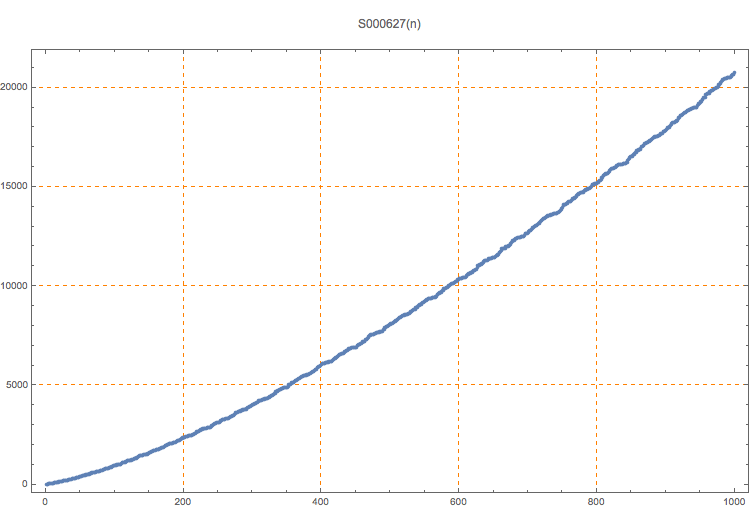Numbers that are sums of consecutive squares but not squares.
5, 13, 14, 29, 30, 41, 50, 54, 55, 61, 77, 85, 86, 90, 91, 110, 113, 126, 135, 139, 140, 145, 149, 174, 181, 190, 194, 199, 203, 204, 221, 230, 245, 255, 265, 271, 280, 284, 285, 294, 302, 313, 330, 355, 365, 366, 371, 380, 384, 385, 415, 421, 434, 446, 451
1
That is, the sums are not allowed to be squares. See S000628 for the count of how many terms are between consecutive squares, which is surprisingly irregular.
T. D. Noe, Plot of 1000 terms
T. D. Noe, Table of 1000 terms
(Mma) nMax = 25; pwr = 2; t = Reap[Do[k = n; s = 0; While[s = s + k^pwr; s <= nMax^pwr, Sow[s]; k++], {n, nMax}]]; t = Union[t[[2, 1]]]; Complement[t, Range[0, nMax]^pwr]
nonn,nice
T. D. Noe, May 14 2015
